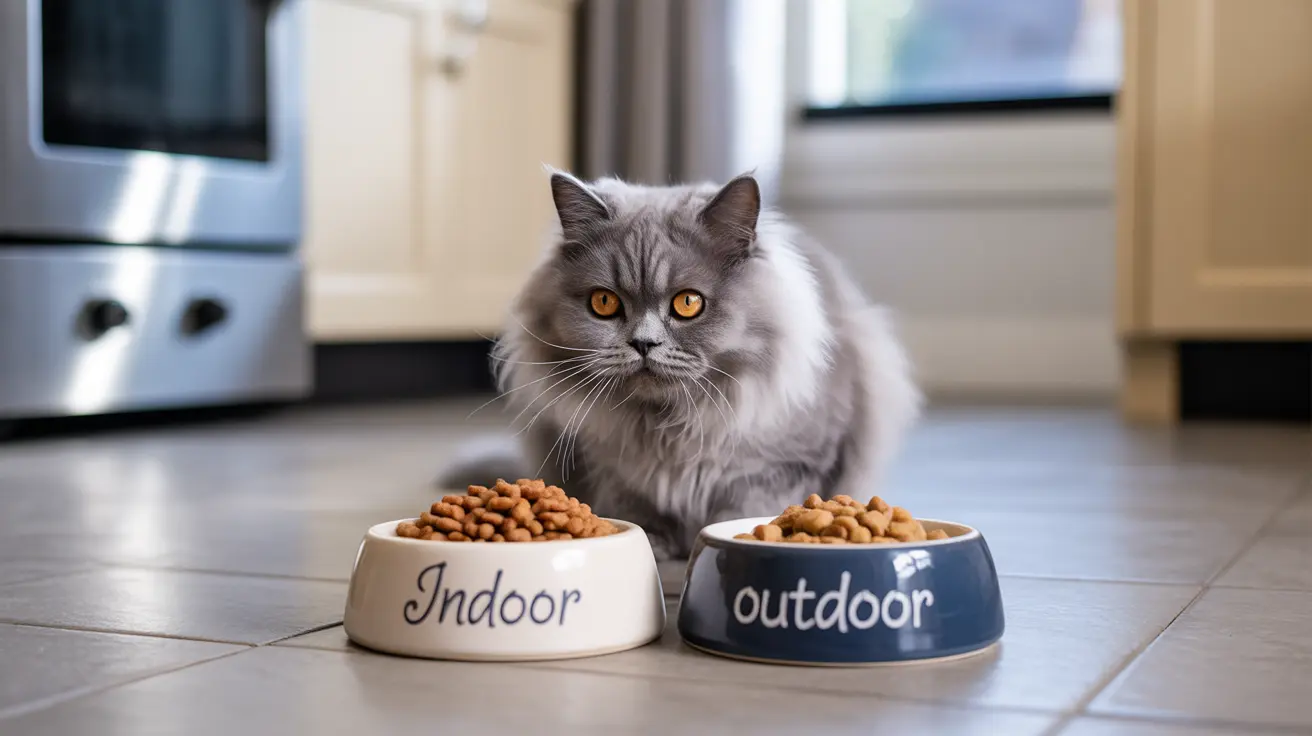If you're a cat parent, you might have noticed different food formulations labeled specifically for indoor or outdoor cats. But what's the difference between indoor and outdoor cat food, and why does it matter? This comprehensive guide will help you understand the key distinctions and make informed decisions about feeding your feline friend.
The main differences between these specialized formulations reflect the distinct lifestyle needs and health challenges faced by indoor versus outdoor cats. Let's explore why these differences matter and how they impact your cat's health and well-being.
Caloric Content and Energy Requirements
Indoor and outdoor cat foods differ significantly in their caloric density. Indoor cats typically lead more sedentary lifestyles, spending most of their time sleeping, grooming, and engaging in limited physical activity. As a result, indoor cat food contains fewer calories per serving to prevent weight gain and obesity.
Outdoor cat food, conversely, provides higher caloric content to support cats that spend time exploring, hunting, and defending their territory. These active felines need extra energy to maintain their body temperature and fuel their increased physical activity.
Fiber Content and Digestive Health
Indoor cat food typically contains higher levels of fiber for several important reasons. First, it helps create a feeling of fullness, which prevents overeating in less active cats. Second, the increased fiber aids in hairball prevention, as indoor cats tend to groom more frequently and ingest more fur due to constant shedding in temperature-controlled environments.
Outdoor formulas generally contain less fiber since these cats are more active and require more easily digestible nutrients for quick energy release.
Protein and Fat Adjustments
While all cats need high-quality protein as obligate carnivores, the levels and types can vary between indoor and outdoor formulations. Indoor cat food may contain slightly lower protein and fat percentages, carefully balanced to maintain muscle mass without contributing to weight gain.
Outdoor cat food typically features higher protein and fat content to support muscle maintenance, provide energy for physical activities, and help cats maintain their body temperature in varying weather conditions.
Special Nutritional Considerations
Indoor cat food often includes additional nutrients to address specific health concerns common to indoor cats, such as:
- Enhanced urinary tract support
- Joint health supplements
- Dental health additives
- Skin and coat maintenance ingredients
Outdoor formulations may include:
- Immune system boosters
- Joint support for active lifestyles
- Higher levels of antioxidants
- Enhanced vitamin and mineral content
Frequently Asked Questions
What are the main nutritional differences between indoor and outdoor cat food?
The main differences include caloric content (lower in indoor formulas), fiber levels (higher in indoor formulas), and protein/fat ratios. Indoor cat food is designed to prevent weight gain and hairballs, while outdoor formulations provide more energy for active cats.
Why does indoor cat food have fewer calories and more fiber than outdoor cat food?
Indoor cats are typically less active and need fewer calories to prevent obesity. The higher fiber content helps control weight, promotes feelings of fullness, and helps prevent hairballs in indoor cats who groom more frequently.
How does the activity level of indoor vs outdoor cats affect their dietary needs?
Outdoor cats need more calories and protein to support their active lifestyle of hunting, climbing, and exploring. Indoor cats require fewer calories due to their more sedentary lifestyle but need specific nutrients to support their indoor-specific health challenges.
Can feeding outdoor cat food to an indoor cat cause health problems like obesity?
Yes, feeding outdoor cat food to an indoor cat can lead to weight gain and obesity due to its higher caloric content. This can increase the risk of diabetes, joint problems, and other weight-related health issues.
Should I choose wet or dry food differently for indoor cats compared to outdoor cats?
Indoor cats often benefit from wet food or a combination of wet and dry food to ensure adequate hydration, as they may drink less water than outdoor cats. Outdoor cats may do well with either format, though dry food can be more convenient for outdoor feeding situations.
Conclusion
Choosing the right cat food formula based on your pet's lifestyle is crucial for their health and well-being. Whether your cat lives indoors or outdoors, make sure to select a high-quality food that meets their specific nutritional needs, and always consult with your veterinarian for personalized feeding recommendations.






